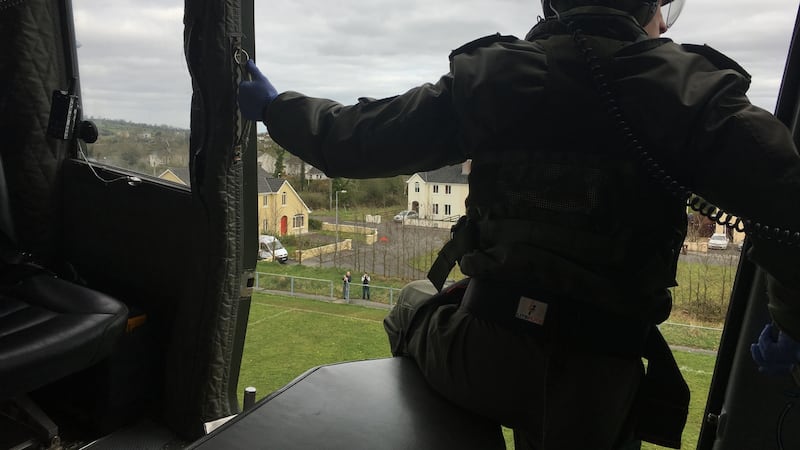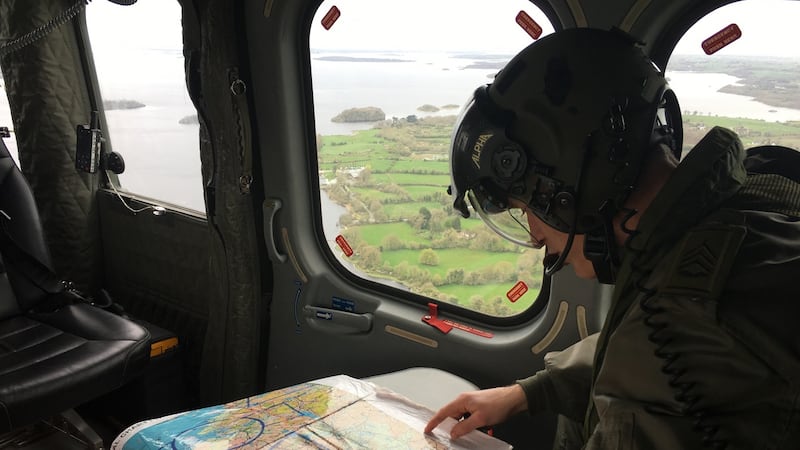The Air Corps is struggling to sustain operations because of a critical shortage of fully trained personnel.
Both operational wings are significantly below strength in terms of pilot and technician staffing.
The shortage of pilots led last September to consideration being given to ceasing the Emergency Aeromedical Service (EAS), a daytime medical airlift service, often related to road crash victims, provided by the Air Corps from a base at Custume Barracks in Athlone in partnership with the National Ambulance Service (NAS).

The EAS was sustained, however, and continues to operate but the pressures that led to the assessment of the viability of the service remain, according to sources.
The service was kept at the insistence of the Taoiseach, Leo Varadkar, who is also Minister for Defence.

Asked to comment on the EAS and personnel shortages, a Government spokesman said: "The prioritisation of Defence Forces outputs, having regard to available resources, is a matter for Government and the Minister with responsibility for defence. Decisions are made on foot of options presented and advice received."
The same questions were put to the Department of Defence, whose Minister of State, Paul Kehoe, has day-to-day responsibility for the Defence Forces. A spokesman said the department had nothing to add to the comment from the Taoiseach's office.
Flying wings
The Air Corps has two operational flying wings. It is understood that No 1 Operations Wing (No 1 Ops) is at 47 per cent of what it should be in terms of available pilot numbers and 58 per cent for the technicians that check and service aircraft.
No 1 Ops has responsibility for running the Air Corps’ fixed-wing aircraft. They include Casa planes, which conduct maritime patrols; the Learjet used for official government business; a number of Cessna planes; the fleet of Pilatus PC-9 training planes; and, from later this year, the high-spec PC-12 Pilatus, which has sophisticated surveillance and airlift capacity.
It is understood that No 3 Ops, which operates the Air Corps’ fleet of AgustaWestland AW139 and Eurocopter EC135 helicopters (including the EAS service), has a pilot strength of 69 per cent of what it should be and a technician strength of 44 per cent.
Because of a shortage of fully qualified pilots, often captains and commandants, senior officers are having to fly missions
Defence Forces sources describe the shortages as close to “critical” in terms of the Air Corps being able to carry out its functions.
The Air Corps should have 107 fully trained pilots but has 78. Of these, about 30 are recently qualified. Qualification should take two and a half years but, because of a shortage of trainers, it is now taking between three and a half and four years.
Supervision of day-to-day operations is usually overseen by officers of senior rank, typically lieutenant colonels.
However, because of a shortage of fully qualified pilots, often captains and commandants, senior officers are having to fly missions, with the result that operational training of newly qualified pilots, which senior personnel would oversee, is being delayed.
Private-sector pull
So far this year, the Air Corps has seen five mid-rank pilots resign to pursue careers in the private sector.
“It is only April, and we fear there will be the same number by the end of the year,” said a source.
Young technicians are in some cases buying themselves out of their contracts early (at a cost of about €6,000) and seeking careers in the aviation industry in the Middle East or industries closer to home, such as air-conditioning and wind-power generation, where skill requirements are, however, far below what they have been trained for in the Air Corps.
In the Defence Forces many earn about €30,000 a year and feel they can do significantly better in the private sector. As with their colleagues in the Army, Air Corps personnel eagerly await the recommendations of the pay commission looking into military pay and allowances.
Training in maritime winching and anti-terrorist air deployment has been curtailed
An Air Corps pilot will earn about €50,000, whereas a counterpart in Aer Lingus will receive about €70,000.
Ryanair takes account of Air Corps flying experience when allocating a pay grade to a recruit from the Defence Forces; this can mean, for an Air Corps captain, a starting salary of €150,000.
“No one expects to be paid the exact same as the outside, but people feel undervalued by the Government and are overworked because of the shortages,” says a source.
Intensive training
Sources describe an operational staff shortage that has the Air Corps running faster just to stand still. After graduation new pilots have to undergo up to three months of very intensive training with instructors before moving into operational aircraft.
“It is now taking guys up to nine months to qualify because the full-time instructors are being taken out to do operations. EAS is not in immediate danger in the coming months but, if pilots continue to leave, I can’t see how we can sustain it. It probably wouldn’t be cancelled but it would be reduced,” said the source.
The EAS is a daytime partnership with the NAS and involves an emergency paramedic travelling in the AW139 when it deploys to road crashes or other situations where an airlift might get a patient to an acute hospital faster than a road ambulance.
The night-time service has been contracted out to Capital Air Ambulance, a UK-based medical evacuation company operating, among other aircraft, a Learjet 45, registration G-XJET.
This aircraft spends most days flying charter in the UK and other parts of Europe before landing in Dublin for the night, on call to perform evacuations as required.
According to Defence Forces sources, the service has been used just two or three times in the past year. Over the same period the Air Corps has completed 50 air ambulance inter-hospital transfers and 574 EAS taskings (that is, call-outs, whether completed or not).

The HSE’s two-year contract with Capital Air costs €3.52 million a year. Defence Forces sources have said the service was used about three times in the past year. Capital Air did not respond to a query from The Irish Times.
The Air Corps personnel shortage has had knock-on effects in other areas.
According to sources, training in maritime winching and anti-terrorist air deployment has been curtailed.
Both include the use of AW139s and, in the case of anti-terrorist deployments, which would probably involve getting Army Ranger Wing special forces soldiers to rapidly evolving situations of extreme danger, involve low-level flying in darkness, aided by night-vision equipment.
Such missions involve pilots operating at the very peak of their capabilities, standards that can only be reached by repeated training exercises.
“A problem for us is that people leaving are often the guys with a couple of thousand hours flying behind them,” said a source.












